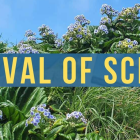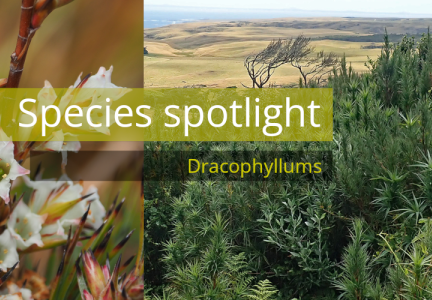
Blog and news
Species Spotlight: Chatham Island dracophyllums
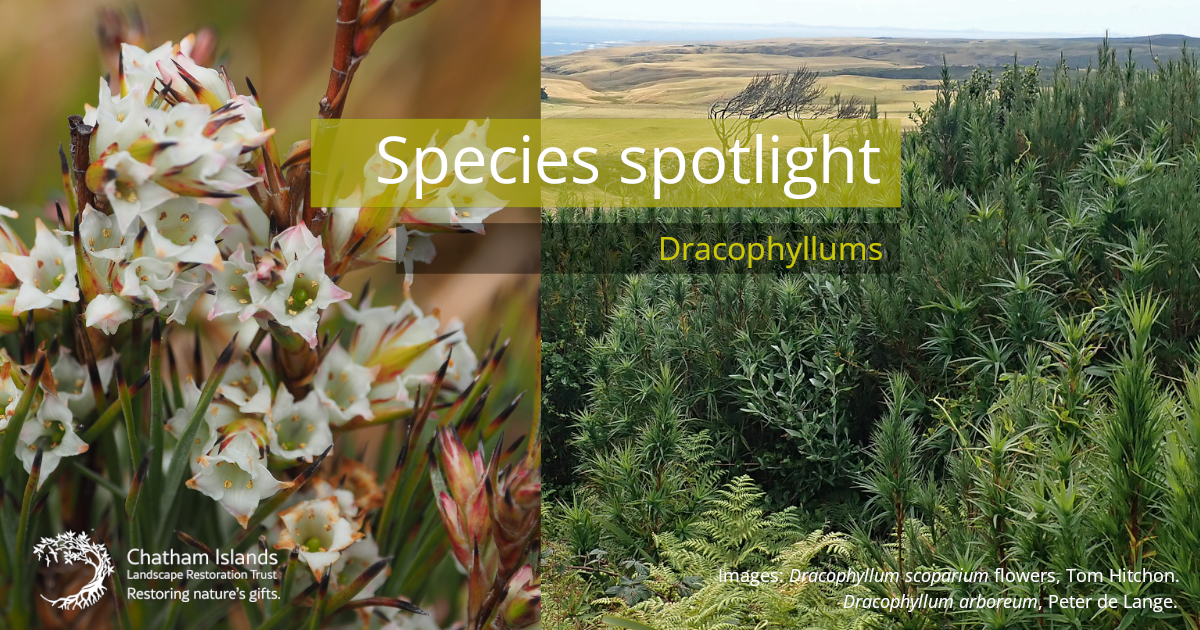
Dracophyllums are one of the plants you'll see a lot of when you visit the Chatham Islands. The two species found here play a key part in their natural ecosystems - but they're also easily confused, as well as being fairly unique. We hope this Species Spotlight helps grow your interest in two subtly beautiful and important plants.
The Chatham Islands have two types of dracophyllum.
The two species of dracophyllum on the Chathams are tarahinau (Dracophylym arboreum, or Chatham Island grass tree) and swamp tarahinau (Dracophyllum scoparium). Arboreum is endemic to the Chatham Islands, while scoparium has so far only been found on Rēkohu/Wharekauri and in the subantarctic islands. That makes them both species fairly unique – and both are classified as “At Risk – Naturally Uncommon”.
There are around 35 species in the Dracophyllum genus across the islands of Aotearoa, with other species found in Australia, Lord Howe Island, and New Caledonia. That brings the genus to an estimated 61 species around the world.

Dracophyllum scoparium, Image Peter de Lange. Dracophyllum arboreum, Image Christopher Stevens
Their name means ‘dragon leaf’ and links to Hercules.
The word 'dracophyllum' is derived from 'drakon' (dragon) and 'phylum' (leaf). This is a reference to its physical similarity to the dragon tree found in the Canary Islands (pictured below) which in turn got its name from the red colour of its sap and the legendary adventures of Hercules battling a multiple-headed dragon.
The leaves’ shape can vary a lot between the species, but Chathams dracophyllums have leaves that are grass-like in appearance, with relatively long, straight and narrow leaves that come to a sharp point at the end. There’s surely something dragon-like in those long, spiked leaves. Maybe? Are we trying too hard now?
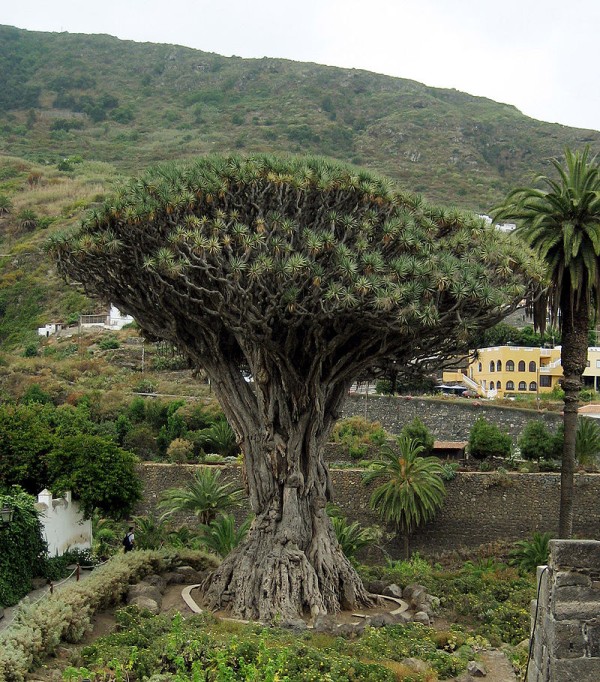
Ancient dragon tree at Icod de los Vinos, Tenerife.
Tarahinau – the forest dracophyllum.
Tarahinau is the biggest of all Dracophyllum, with some specimens growing 18 meters high. This is recognised in its specific epithet 'arboreum', which translates as 'tree-like'.
It dominates the in-tact forests of southern main Chatham, and is also found on Pitt and Rangatira. It tends to grow best away from the coast in areas with deeper peat (partially decayed plant matter). The tarahinau’s fallen leaves create a unique ecosystem. Its damp, rich forests are home to forest birds, orchids, invertebrates, moss, and ferns.
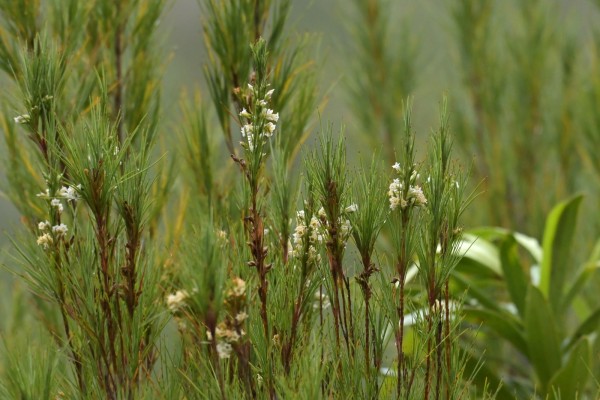
Dracophyllum scoparium or a hybrid in flower, in the south of main Chatham. Image Christopher Stevens
Swamp tarahinau - what it says on the label.
Tarahinau is not to be confused with the much smaller swamp version – although it often is, particularly where the larger tree along the edges of the wetlands scoparium favour. Smaller specimens can look similar enough to confuse at a glance. The two can also hybridise in disturbed habitats.
Swamp tarahinau forms shrubs of around 2 meters high. Its ideal habitat is restiad bogs – a special type of wetland low in fertility but rich in peat. They’re the dominant woody shrub in these habitats. Peat covers a great deal of main Chatham, but is lacking on the other islands; this lack of suitable habitat is why it’s likely restricted to the main island.
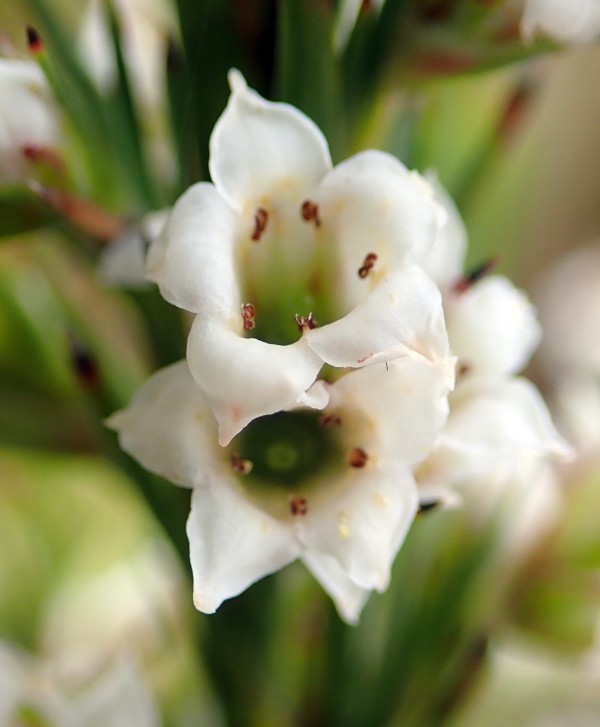
Dracophyllum scoparium on North Road, Rekohu Wharekauri. Image Peter de Lange
They have beautiful flowers.
Both dracophyllums have small, white flowers. Arboreum's flowers sometimes have a red or pink hue. It’s a simple, understated beauty. They flower (and fruit) throughout the year and have a subtle sweet fragrance.
Scoparium’s flowers grow in clusters of around 3-6 at the tip of the twigs; arboreum's flowers grow in spikes near the ends of their branches, and can be partially hidden by sharp-tipped bracts (a special type of leave that typically grow around the flower of a plant).
Nothing beats walking through a rich peatland covered with handsome dracophyllum scattered with its small flowers.
Dracophyllum is good for the birds and the bees.
Both dracophyllums have good flowers for birds and native pollinators.
They're also good for introduced bees, as many islanders are well aware. If you live on or have visited the Chatham Islands, you may be familiar with tarahinau honey. The apiary industry on the Chathams has been blooming over the last decade, particularly as the islands are free from the varroa mite that plagues many honeybee populations.
Dracophyllum arboreum sprouting in a fern. Image Jess MacKenzie
They have baby foliage.
Both species are dimorphic – which means they have juvenile foliage. Tarahinau has yellow-green leaves, which can be 25cm long and 15mm wide, while adult leaves are just 2.5-9cm long and 1-2mm wide. Juvenile foliage can also appear on larger arboreum trees, so a branch or a shoot can have the broad leaves while the rest of the tree has needle-like leave. Scoparium has bronze- to red-green juvenile leaves that take the broom-like form that gives it its name.
Tarahinau frequently begins life as a epiphyte on the trunk of a tree-fern, while swamp tarahinau begins life on the ground – but can flower in its juvenile form, which its larger cousin doesn’t.
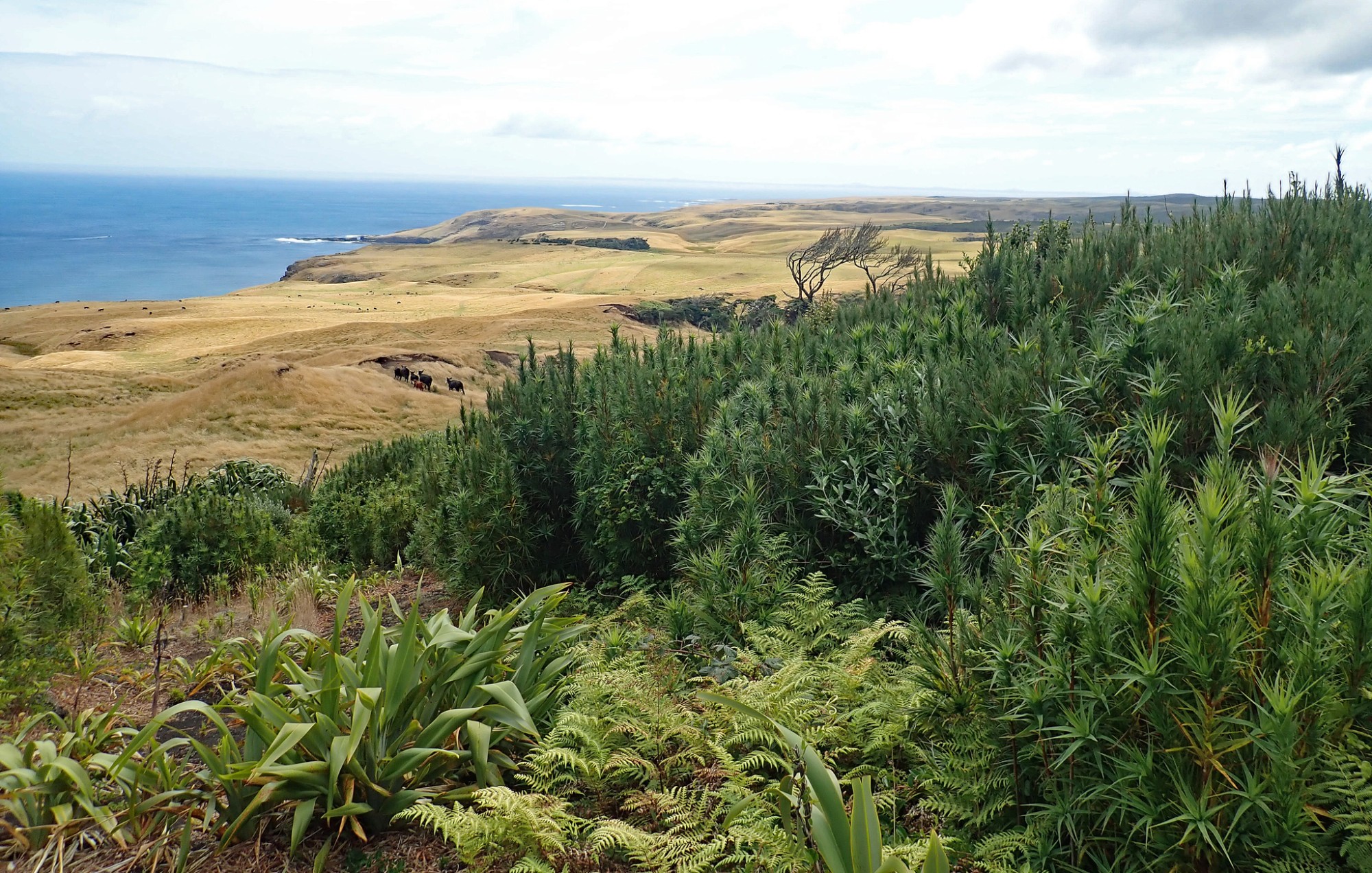
Dracophyllum arboreum in the south of Rekohu Wharekauri. Image Peter de lange
References
New Zealand Plant Network - Dracophyllum arboreum
New Zealand Plant Network - Dracophyllum scoparium
Field Guide to New Zealand Native Trees, John Dawson & Rob Lucas, 2020
Thanks to Tom Hitchon for contributing.

